You know what “Fiat” stands for, right?
Fix it again, Tony.
Well, they keep on trying.
The 500 coupe – which is small and cute like the Mini Cooper – isn’t selling like the Mini.
And the larger, less cute 500 L isn’t selling at all.
Fiat needs a winner.
Maybe a Jeep will do.
Like the Jeep Renegade – which does sell. 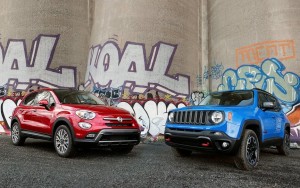
Enter – sbrigati! – the 500X.
It’s the Italian cousin of the Renegade, one of the first jointly-designed products of the Fiat-Chrysler-Jeep merger.
The idea seems sound. If the Jeep version sells, maybe the Fiat version will, too.
Maybe it’s the Fix that “Tony” has been looking for.
The 500X is a compact crossover SUV, a notch smaller than something like a Honda CR-V (and about the same size as an HR-V).
It’s related to the Jeep Renegade – Jeep being owned by Chrysler (and Chrysler now owned by Fiat) and shares engines (and transmissions) and offers AWD – but doesn’t have the Jeep’s additional off-road capability.
It emphasizes style and on-street performance instead.
Base price is $19,995 for the Pop trim with a turbocharged 1.4 liter engine, front-wheel-drive and six-speed manual transmission. This is the only version of the 500x that’s available with a manual transmission – and it’s the only version that comes with the 1.4 liter turbo engine. 
All other trims – Trekking and Lounge – come standard with a larger (not turbocharged) 2.4 liter engine paired with a nine-speed automatic. But you can choose FWD or AWD with either trim.
Prices top out at $27,035 for an AWD-equipped Lounge, which comes standard with all the equipment included with Trekking trims (17-inch wheels in place of the base Pop’s 16s, an upgraded LCD display, driver-selectable modes for the automatic transmission, foglights) plus an upgraded eight-speaker audio rig and the option to buy things like a full-length panorama glass roof, mocha-java leather seat covers and a nine speaker premium Beats audio system.
Though closely related to its American cousin, the Jeep Renegade, the 500X is most similar in looks and layout to the Mini Clubman ($24,100-$27,650), which also offers sporty powertrains as well as your choice of FWD or AWD.
Sad news. The high-performance Abarth version of the 500x that was on deck no longer is. It may be resurrected sometime next year (calendar year 2017) as a 2018 model.
The Easy and Trekking plus trims have been dropped, too.
WHAT’S GOOD
Available with either of two engines – most rivals come with just one – and the 500 X’s optional 2.4 liter engine is the strongest one (180 hp) you can get in the $22k-$25k-ish price range, with the exception of the 500 X’s rebadged brother, the Jeep Renegade).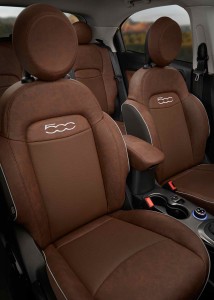
About 10 cubic feet more cargo capacity than the roughly same-sized 500 L.
Good gas mileage (25 city/34 highway) with the standard 1.4 liter engine.
Optional (and higher-powered) 2.4 liter engine designed to drink regular unleaded.
Available with a manual transmission (other small/sporty crossovers like the Mazda CX-3 and Chevy Trax are automatic-only).
WHAT’S NOT SO GOOD
Manual only offered with the 1.4 liter engine – which is only available in the base Pop trim/FWD version of this vehicle.
Optional 180 hp engine is thirsty – especially when paired with weight-adding AWD.
Base 1.4 engine designed to drink premium unleaded.
Nine-speed automatic (mandatory with the 2.4 liter engine) sometimes seems confused about which gear to be in.
Costs more than rivals when ordered with AWD.
Less total cargo space than most rivals.
The 500 X comes standard with the same “Multi-Air” 1.4 liter turbocharged four that’s used in the 500 L – but (unlike the 500 L) you can upgrade the X to a larger “Tigershark” 2.4 liter engine, if you want more power.
The 1.4 liter engine is pretty powerful, though.
Relative to what you get in rivals, anyhow.
It makes 160 hp pushing 22 pounds of turbo boost. That’s a lot of boost. And the resultant output is strong compared with the Honda HR-V’s 1.8 liter, 138 hp engine, the Mazda CX-3’s 2.0 liter, 146 hp engine – and absolutely blows the poor little Chevy Trax’s 1.4 liter, 138 hp engine right out of the water.
None of these models offer a more powerful optional engine, either.
You can also get a manual (six-speed) transmission in the Fiat – a rare feature in the class and small crossovers, generally.
Unfortunately, Fiat only offers the manual gearbox with the base 1.4 engine – and that engine is only available in the base Pop trim, and only with front-wheel-drive.
All other versions of the 500X come with the larger 2.4 liter engine; it makes 180 hp – but you have to accept a nine-speed automatic transmission as part of the deal. It has some issues (more on this below).
Acceleration is good for this class of vehicle: 0-60 takes about 8.8 seconds with the 2.4 liter engine and FWD. That’s right there with the HR-V and CX-3 (and much speedier than the under-engined Chevy Trax, which needs 10-plus seconds to break 60).
However, the Fiat’s gas mileage is lower than rivals when the car is equipped with the 2.4 liter engine.
Best-case is 22 city, 31 highway (21 city, 30 highway with AWD) which is about 5-8 MPG below what rivals like the HR-V (28 city, 35 highway with FWD; 27 city/32 highway with FWD) and CX-3 (29 city, 35 highway; 27 city/32 highway with AWD) deliver.
The 1.4 engine’s mileage is good – 25 city, 34 highway – however (and weirdly) this engine requires premium unleaded fuel.
Remember that bit about 22 pounds of turbo boost?
The X’s rivals – including the Chevy Trax, which is turbo’d, too – all take regular. As they probably ought to, given these are budget-minded vehicles.
The nine-speed automatic has sport/manual modes and there are three driver-selectable settings (Normal, Rain/Snow and Sport) for the optional AWD system.
Unlike the Jeep Renegade’s more off-road capable system. the Fiat’s is an on-road/street-driving-intended set-up, like the available AWD systems in rivals like the HR-V, Trax and CX-3.
The Fiat – showing its Jeep kinship – does have more ground clearance than its rivals: 7.9 inches with all-wheel-drive (about an inch less with FWD) vs. 6.1 inches for the CX-3, 6.7 inches for the Honda HR-V and 6.2 inches for the Chevy Trax. This should help get you through on snow days – but if you’re looking for more in the way of off-pavement capability, you might want to take a look at the Renegade. It’s the only subcompact crossover currently available with a Low range gearing feature as well as off-road terrain settings (sand/gravel/mud, etc.).
Though it’s still tiny relative to the average car (for perspective, a compact sedan like the Toyota Corolla is more than a foot longer overall) the X feels less small – less vulnerable – than the 500 hatchback. Especially on the highway. Probably because of the additional 109.6 inches of wheelbase (101.2 vs. 90.6 for the 500 hatchback) and several hundred pounds more curb weight (3,278 lbs. for the AWD model vs. 2,865 lbs. for the 500 hatchback).
The 500 hatchback is highway-capable but being tall and short and light is not ideal for dealing with the slipstream of passing Kenworths. The 500 X is much better suited for such duty while still being small enough to be easier to maneuver in urban/suburban areas than the typical car.
Arguably it is slightly better in that role than its rivals – by dint of being slightly smaller-on-the-outside than all of them except the Trax (which is exactly the same overall length, 167.2 inches).
The Honda HR-V, for instance, is a couple inches longer overall (169.1 inches) so it’s that much less able to slot into and out of tight curbside parking spaces downtown. It also has a noticeably wider turning circle – 37.4 feet vs. 36.3 for the Fiat.
The Mazda beats them both, though – with the tightest turning circle in the class (34.8 feet).
Both of the Fiat’s engines have good power – and deliver class-competitive acceleration.
The standard 1.4 engine’s 184 ft.-lbs. of torque is especially noteworthy because it provides the low-RPM torque that’s absent in rivals – or rather, which you have to work their engines harder to access. The Fiat’s torque output is not only greater, it arrives much sooner – at just 2,500 RPM.
The HR-V’s peak of 127 ft.-lbs., in comparison, doesn’t happen until the engine spins to 4,300 RPM.
Only the Chevy Trax comes close – with 148 ft.-lbs. available at just 1,850 RPM.
Like the Fiat, the Chevy’s turbocharged – and the turbo boost is what accounts for the healthy torque numbers. However, the Chevy manages those numbers on regular gas – while the Fiat must have premium to deliver them.
That’s odd, given the 1.4 engine is the economy engine in the lineup.
Meanwhile, the optional 2.4 liter engine – the performance engine – is set up to operate best on regular.
Go figure.
The optional nine-speed automatic (which is effectively the standard transmission in all trims except the base FWD Pop) has four overdrive ratios. Sixth (0.81), seventh (0.70), eighth (0.58) and ninth 0.48) are there to cut revs – and thus, save gas.
In actuality, the nine-speeded Fiat’s numbers are not as good as rivals’ numbers, despite those rivals having transmissions with only six gears.
Or no gears at all – if they have a CVT.
Part of the reason for this, of course, is that the 500X has more engine and that necessarily entails a bigger appetite. It’s also heavier than its rivals, two of which (the Trax and the CX-3) weigh just over 2,800 lbs. or about the same as the much smaller 500 hatchback.
And the 500X would surely be even thirstier if it didn’t have those four overdrive gears.
But the downside of all those gears is a fairly busy transmission that’s been programmed to seek out those higher gears as soon as possible, in order to to eke out the MPGs. That means lots of transitions because of the distance (ratio-wise) between say 4th or fifth and eighth or ninth.
A six speed automatic might downshift two gears under moderate pedal.
The Fiat’s box might need to drop down three or more.
It’s hard to make that feel smooth – and often, it doesn’t feel smooth.
Other manufacturers (Honda) have gone with continuously variable (CVT) automatics to maximize mileage while maintaining smooth (and quiet) operating characteristics.
Unfortunately, government fuel-efficiency mandates rather than buyer/market demand are driving such extreme solutions as nine (and soon ten) speed automatics with multiple overdrive gears on top.
Absent government strong-arming, Fiat might have been able to offer the hunky 2.4 liter engine with the six-speed manual transmission. It would have made the thing much more fun to drive – and less busy to drive – if slightly less economical to drive.
The MPG difference likely would have been about 3-4 MPG less overall. You probably could live with that.
But Fiat can’t – because of the pressure coming from the government.
Which is why you can’t get a manual with the bigger engine.
Like the Mini Clubman, the 500 X is a cheerful-looking thing. Even the seatbelt buzzer has a happy sound.
The interior, likewise, features body-colored trim plates, available ambient mood lighting and you can order up various packages to individualize your ride.
The Trekking trim sounds rugged, but don’t be fooled. A Jeep in Fiat drag it may be, but it’s more looks than goods. You’ll get a different front clip, fog lights and an 18-inch wheel/tire package – but no skid plates or Low range gearing.
Head to your Jeep store for those things.
You can, however, get in-car WiFi, a heated steering wheel and 2D/3D GPS mapping.
The X is about the same size on the outside as the 500 L but the allocation of space inside is significantly different.
On the plus side, the X has about 10 cubic feet more cargo capacity than the L (32.1 cubic feet with the second row folded vs. 21.3 cubic feet) and the X’s rear cargo area also has additional versatility in the form of a secondary storage compartment hidden under the main trunk floor.
On the downside, the X’s second row legroom (34.8 inches) is a bit less than the L’s (35.2 inches) and a lot less than the HR-V’s (39.3 inches).
The Honda also kills when it comes to cargo capacity – both behind the second row (23.2 cubic feet) and with the second row folded down (59 cubic feet, best in the class).
The Mazda CX-3 also has about the same backseat legroom (35 inches) and significantly more total cargo capacity (44.5 cubic feet).
The often-insulted Chevy Trax ( I like the thing) does well on both counts, with 35.7 inches of second row legroom and a very impressive 48.4 cubic feet of total cargo capacity (nearly as much as the Honda HR-V).
Curiously – because the X is wider on the outside than the L – there is much less shoulder room in both of the X’s two rows: 54.3 up front and 52.8 in the back vs. 57.3 up front and 54.7 in the back for the L. The Honda HR-V also has more shoulder room in both rows as well.
Both the Mazda CX-3 and the Chevy Trax each have less.
A further curiosity is that headroom is tighter in the X (39 inches up front and and 37.8 in the second row) than it is in the L (40.7 inches up front and 39.3 in the second row). This is curious because the X is marketed as a crossover SUV – and crossover SUVs are usually designed to give you more rather than less headroom.
But then, these micro-SUVs are as much about form as they are about function.
This could redound to Fiat’s benefit – because the 500 X has much more stage presence than the nondescript-looking HR-V (and the even more vanilla-looking Chevy Trax). The 500 X’s biggest worry on this count is without doubt the Mazda CX-3.
Fiat is a relative newcomer (a return comer, actually) to the U.S. market and maybe should have priced this model more aggressively.
The base $19k Pop trim is right there with the base trimmed versions of rivals like the HR-V, CX-3 and Chevy Trax, but when you add AWD the price jumps to almost $24k and now you’re looking at spending more than you would for the AWD-equipped versions of the Honda ($23,125) and a lot more than you would for the least expensive AWD-equipped versions of the Mazda ($21,210) and the Chevy ($21,620).
On the other hand, it’s a pretty sweet deal compared with the Mini Clubman – which starts at $24,100.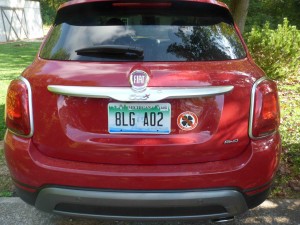
The chief worry here is the future of Fiat – which looks iffy.
If Fiat bails and heads back to Europe, it won’t mean problems getting parts or service but it will probably mean that resale values take a dive. That’s the usual course of events with orphaned cars.
The fact that Fiat decided not to offer an Abarth version (at least, not here – and not now) is kind of ominous, too. It suggests a pulling back.
THE BOTTOM LINE
This might be the fix that Tony needed.
Hopefully it’s not too little … and too late.
EPautos.com depends on you to keep the wheels turning! The control freaks (Clovers) hate us!
Goo-guhl blackballed us!
Will you help us?
Our donate button is here.
If you prefer not to use PayPal, our mailing address is:
EPautos
721 Hummingbird Lane SE
Copper Hill, VA 24079
EPautos stickers – new design, larger and magnetic! – are free to those who send in $10 or more to support the site.


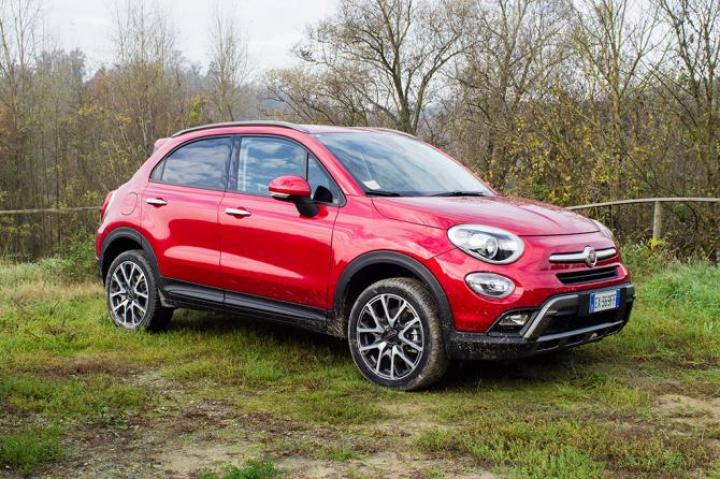

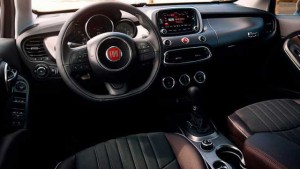













By now it should be obvious to everyone: Us Italians can make great spaghetti; we can drive! But we can’t make decent cars to save our lives!
FIAT is once again at the very bottom of Consumer Reports reliability rankings. Fiat: Makers of notoriously undurable, unreliable depreciate-to-zero piles of crap for decades…only now they’ve got high-tech electronics thrown into the mix. Yeah, that should go real well!
Funny how the bottom-feeders always seem to flock together. It’s like they all assemble around Chrysler. Fiat, AMC, Renault. And even anything that was once decent, like Jeep and Mercedes, gets sucked down once it affiliates with Chrysler.
Pop. Trekking. Lounge. Multi air. All bathroom humor for the kindergarten crowd.
Tiger shark. Worldwide, one of the top sharks implicated in unprovoked fatal attacks.
Marketing at Fiat Chrysler must be sleeping because Italian doesn’t readily translate to American English.
It’s those damned Millennials! Get off my lawn, you damned kids! 🙂
Can I at least have my ball back?
Of course!
Italian cars aren’t known for being reliable, and neither are Chryslers, so how a 9 speed, AWD, turbocharged (WTF with those boost pressures?!), it sounds like a total recipe for complete disaster honestly.
Yeah… I’d be leery, too.
The nine speed FWD transaxle has known operational issues already. It’s also a very expensive unit to replace….
…how a 9 speed, AWD, turbocharged car IS GOING TO HOLD UP… **Forgot to add**
Another note and off subject, I really wish Fiat would have opened up their Twinair variant to the U.S. Just like the Geo Metro/Suzuki Swift, I’m willing to bet it would have picked up that fringe set of micro engine fanatics in a heart beat. I think that’s the issue with these modern Fiats in America. Too much chic, no price benefit, no reliability benefit, no fuel savings, no practical benefit…no point at all really.
eric, the Honda shiftless transmission(my term for them)you say is quiet although you’ve said before they’re all loud.
And the 0-60 speed of any of these boxes is not that big a deal for me or for anyone I know. Nobody drives them flat out I’m aware of and it’s not like people can still run from light to light. I don’t want a vehicle that won’t do speed fairly easily I want to travel but that isn’t an issue with anything I’ve drive. The last thing I did any serious mileage in was the Ford Fusion. It was plenty strong and I don’t recall ever flooring it from 0 to 60 and I have a fairly heavy foot. If I had a V-8 Camaro or Mustang or BMW or anything that’s meant for sheer performance those numbers would be important. I can tell you from running 6-700 (rarely do you get a chance to floor one unless you’re first at a light and there’s no one in front since you’d run over anyone else doing that in traffic)l jack along no matter how much power they have at their disposal and finally(or not)hit one hard enough to get to 75 pulling onto the highway in front of me. It’s really stupid for them not to use the power to move out in front and not blend in easily in front of a big rig but that’s just not the way people drive. Now and again I’ll flash my lights just to light a little fire under their foot so I don’t have to change lanes and let them in doing their slow-mo bullshit when they’ll finally be going faster than me and likely I’ll need to pull back into the slow lane without passing them. It’s maddening, but that’s the way people drive. The point being, those fast times to 60 seem fairly irrelevant to 99% of the fools I see on the road.
Some things I do value though are torque steer….or the lack thereof.. That Ford had great power and you could pass like Superman but at the same time, it had so much torque steer it was squirrely coming back across the center stripe. The Ford didn’t have a lock on torque steer either, one of the things I detest about FWD.
Just my 2 cents on arbitrary numbers of getting to 60 mph. In my view, we’re well beyond judging acceleration to 60 and if that 0 to whatever really matters, in Tx. it matter to 75 or 80 cause 60 just puts you in line to get run over or simply pisses off everyone behind you. Every time I read 0-60 all I can think of is “irrelevant”.
My motto on passing is “get the hell around” but most people won’t do it and if you drive to require them to do it, they’ll just stay behind you. I’m more concerned with the way dolts drive than how fast their vehicle can accelerate since that seems to be a non-issue.
If you think getting close before passing doesn’t have an effect on the worst clover then get out of your car or pickup and get into something with big letters like KW or Peterbilt and you’ll see them watching the mirror and gassing it when they wouldn’t for a car. The driving public is stupid and dangerous. The people here probably are way ahead of the curve in driving. But even the ones who know their ride is slow know they can get out of the way with the power they have if they’ll just use it. Maybe those sensors (radar or camera)that control automatic braking should be set for automatic acceleration with data coming from behind also.
My old 6.5 Turbo is slow comparatively but I never had any problem getting up to speed. Same with the wife’s old Cutlass. It’s a dog compared to new cars but it doesn’t make people have to slow or endanger others because of it’s lack of acceleration….comparatively, because the driver will nail it and not be a factor or simply wait, something a great many people should do more often. I’ve been wanting that missile to work since my dad bought a 57 Chevy and they just sat there in the hood. Hey daddy, couldn’t we get some real missiles? It’s a thought son, it’s damned sure a thought.
Hi Eight,
On the CVT: It depends on the application.
In a low-powered/over-heavy car a CVT’s operating characteristics heighten the sensations (and sounds) of the engine, which seems to be (because it is) working hard all the time 🙂
I agree on 0-60.
In fact, I’ve said so! Pointed out that a good (alert) driver in a slow car can usually get the drop on much faster cars driven by not-alert people!
Slightly off topic, but I saw a Mini Cooper the other day that said “Paceman” on the back. How long you figure that ‘e’ will last?
It’s a weird thing but many times Mini drivers have pissed me off deluxe. Glad there’s not more on the road.
Hi Eight,
In my neck, it’s not Minis but PT Cruisers that are a certain bet there’s a Clover behind the wheel!
eric, there don’t seem to be many left. I think they fell apart doing the long distance thing. They seemed to be slow…..much like their owners ha.
I think Fiat mistake is to not allow Chrysler dealers to sell Fiat’s. They could be everywhere, at fairly low cost, if they didn’t insist on stand alone stores, which are probably a hard sell to dealers. Many dealers have been burned in the past lately when it comes to big investments in new construction only to have the product disappear. Think of all those Hummer dealers who built those buildings with the big H on the front.
People don’t buy Fiat’s largely because there aren’t many dealers. I think Fiat’s and Chryslers reputation is a factor but most people aren’t too keen on driving more then a few miles to even buy, let alone get service for their cars.
Hi Rich,
That’s spot on. Fiat stores are isolated – and they only have a few models, all of them small and so of limited appeal. Having a multi-make store would probably have cross-pollinated both, to the benefit of both!
At least the local Fiat dealer by me, didn’t have to build a new service department, since its on the same property as his Nissan, Mercedes, Jaguar and Volvo dealership . Yes, he had to build a brand new showroom, but when you bring it in, it goes in the Nissan garage for service.
The Nissan garage was the very place I could count on getting my pickup fucked up by mechanics under mandatory warranty service. It had a feature to let the engine lose it revs slowly so there would be little rpm difference on a shift. Sounds good, but the couple times I took it in, the mechanic would very self-righteously(he and I didn’t get along because of this)adjust the carb or the computer back to what he said were factory specs. But when he’d do that, the engine would simply stay at the same rpm while you were shifting so it was revved up when you caught another gear. It didn’t do that when new and after a while of running it, it would go back to losing speed as it should have. I could never get this across to him. He was right, that was it. No, he wouldn’t drive it and see he was wrong. We nearly came to blows before I just quit using their shop. And that pickup was far from trouble free. My buddy bought a Toy a year newer(wish I had waited) and it was way more powerful with FI and the same size engine. I drove it when it was new and kicked myself every day not to wait for Toyota to make an IFS like the Nissan. The trouble was, Toyota wouldn’t say and nobody knew if they were going to change from the old style solid front axle. Mid eighties was a terrible time to buy anything. Even japanese vehicles sucks for lots of reasons. They might have been better than a GM small block diesel but not by a whole bunch. Even Isuzu’s were shitty POS although their engines and drive train were good. All the foreign pickps went through a terrible phase that in my opinion, was worse than the big 3’s pickup problems. You could get another carb for a GM, change the distributor for an old HEI and throw the computer in the trash and they ran fine. You could fairly much do the same for Dodge and they were fine but Ford’s were always a PITA and cost more to change to non-computer carbs. The 351’s were pathetic and the hot water 400’s were a bit better. At least you could get another manifold and carb for the 400 and they lasted fairly well with decent power. That was a bleak automotive period I don’t care to relive. I got my fill of computer controlled vehicles back then and have only had one since, the wife’s ’95 Cutlass Supreme SL that’s been bullet-proof mechanically but a computer nightmare.